
An Ax to Grind - A practical Ax manual
.pdf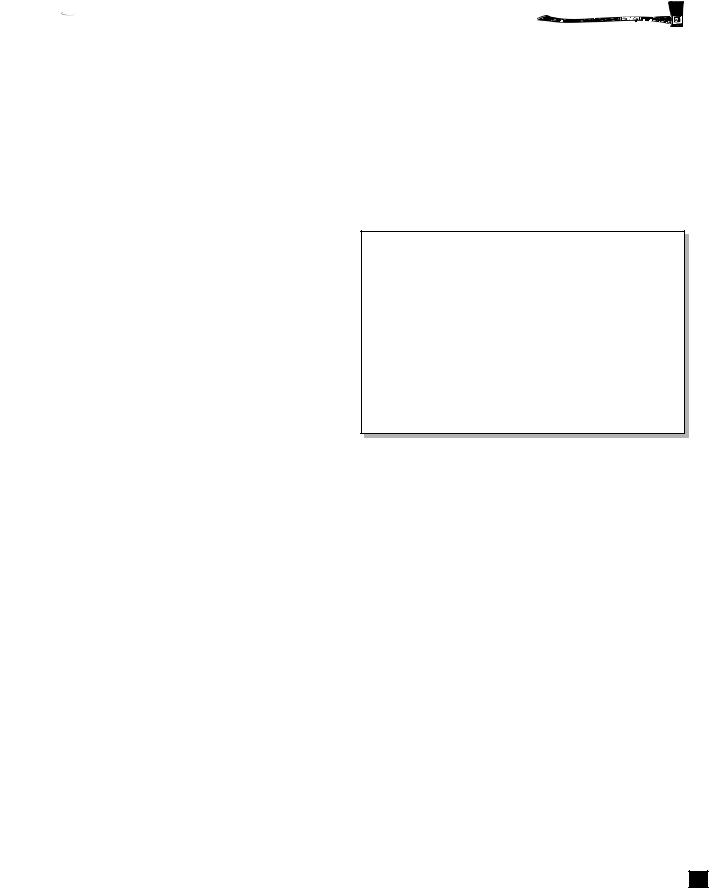
•Do not chop directly through a knot if you can chop around it or chop the knot out. Knots often are very hard and can chip your ax or adz.
•Never strike the ground with your ax. If you need to cut roots, use a grubbing tool like a Pulaski or grub hoe. If you have to use an ax, use a “grubbing’’ ax that you don’t care about abusing.
•Never try to drive a stake or wedge with the flat side of your double-bit ax. It is almost sure to crack the eye.
•Never use the poll of a single-bit ax for pounding steel wedges. The poll is there for counter balance to the bit. It is not there for pounding! The poll is not tempered properly to pound and will become deformed or chips of steel may fly off. A single-bit ax can be safely used to pound wooden or plastic wedges—that is all!
•The ax head is brittle at extremely cold temperatures. It is likely to chip unless it is warmed before using. One way to warm up your ax is to place it (sheathed of course) under your armpit, for a few minutes. Or warm it between your hands. If you don’t want to share some of your body heat with your ax (which by now should be considered a family member), chop very slowly for at least 2 minutes in order to warm the ax up in the wood.
Chopping Technique
Chopping is an art. Start out loose and relaxed. Hold the ax with one hand fixed just above the swell at the end of the handle. On the up-stroke, the other hand slides up the handle close to the head. On the down-stroke, it slides back down the handle. At the point of impact, it is close to the lower hand. Each blow lands exactly where it is intended, with the proper force, and at the proper angle. There is no shock to the hands or shoulders. One corner of the ax blade should always be free of the wood, so that a slight twist
Using Axes
brings out the chip and releases the bit without undue strain.
Grip—On an ax that is hung properly to fit you, place your left hand about 1 or 2 inches from the butt end of the handle or helve. Place your right hand about three-fourths of the way up the handle. This is the proper hold for a right-handed person (Figure 76).
Forehand Swing—This swing is used to cut the right side of a notch. These instructions are for
Figure 76—The proper ax hold for a right-handed person (drawing by Frederic H. Kock).
right-handed choppers. Raise the ax over your right shoulder, your hands in the starting position (Figure 77). Swing the ax down on the log with a very natural swing motion, your right hand sliding down the handle toward your left hand at the bottom of the handle. You will end this motion with both hands at the end of the handle when the ax strikes the wood. Do not drive the ax straight into the wood, but instead cut on an angle about 45° to 50° from the edge of the log (Figure 78). Raise the ax again, slide the right hand up about three-fourths of the way on the handle and start your next swing. Continue this motion for the forehand swing. Your left hand never leaves the end of the handle.
35
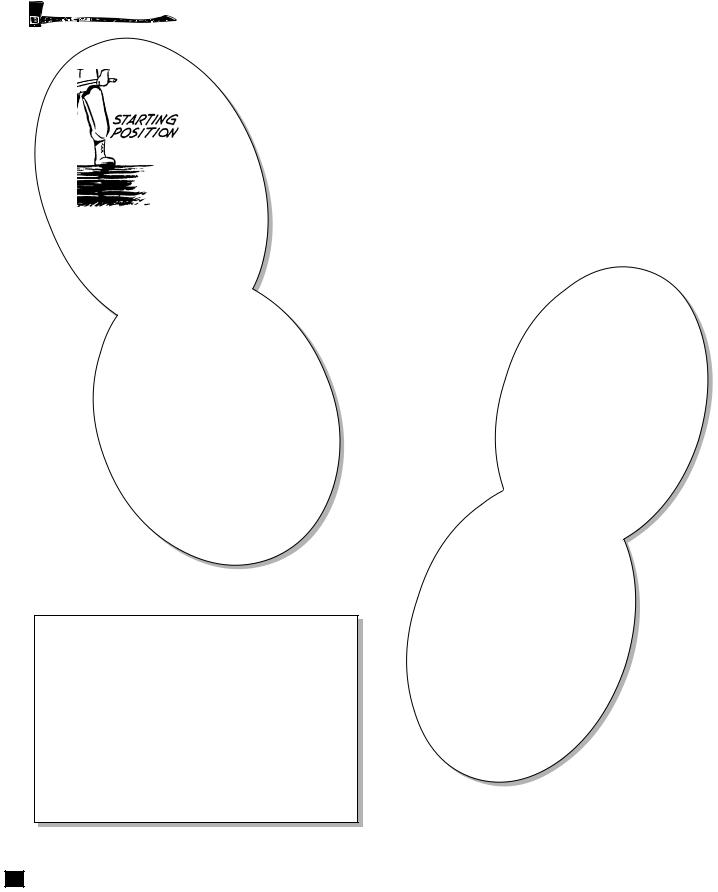
 Using Axes
Using Axes
Backhand Swing—The backhand swing is used to cut the left side of the notch (Figure 79). Bring the ax over the right shoulder as in the forehand swing, but shift your body well to the left so that the ax comes down more in line with the left side of the notch. This backhand swing is somewhat more difficult to master gracefully. Proper ax use always includes these two motions, the forehand swing and the backhand swing, always over the right shoulder for right-handed choppers. Changing hand positions instead of using or developing the back swing technique is not considered acceptable ax use.
Accuracy is the only thing that counts; the force
Figure 77—Forehand swing (drawings by Frederic H.
Kock).
Figure 78—Cut at a 45° angle to be most effective (drawing by Frederic H. Kock).
Figure 79—Backhand swing (drawings by Frederic H.
Kock).
36
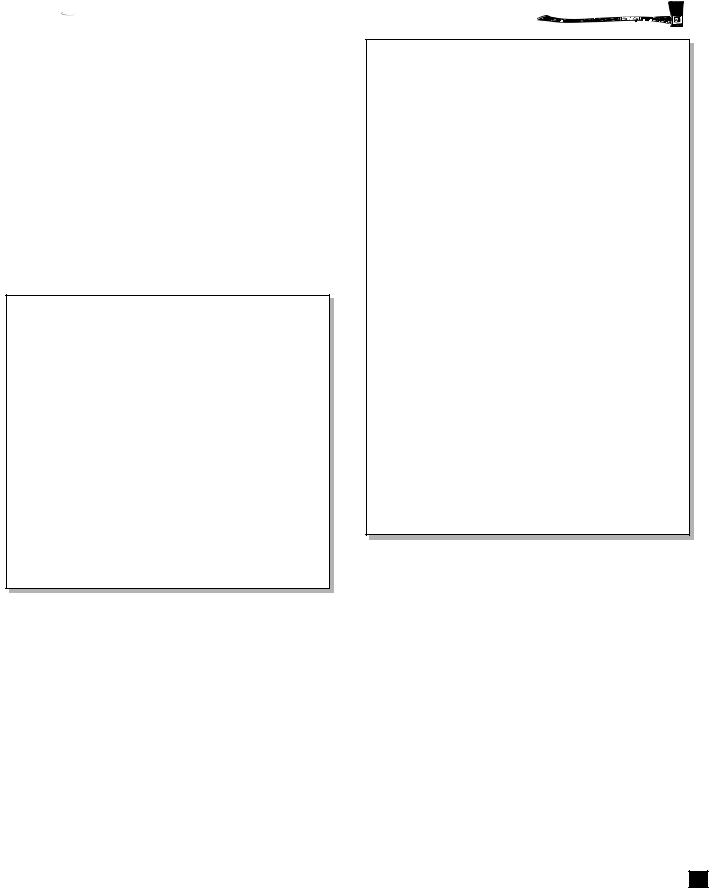
of the swing is not nearly as important as its placement. Chop with a series of strokes: the top, the bottom, and then the middle (Figure 80). If you chop in that order (top, bottom, middle) with both the forehand swing and the backhand swing, the chip will fly out after your last cut. On your last cut in the middle on the backhand swing, you should give a slight twist to the ax as you sink it into the wood to pop the chip out. Swing with a natural rhythmic and unforced motion. Always watch your aim. Leaving one edge of your ax blade exposed will help ensure it doesn’t get stuck in the log.
It is best to confine yourself to one grip and do all the chopping either rightor left-handed,
Figure 80—Sequence of strokes for most efficient chopping (drawing by Frederic H. Kock).
whichever is your natural swing. In the long run, it is important to learn to chop well both righthanded and left-handed. Being ambidextrous can save a chopper a lot of trouble in everyday work in the woods, particularly in limbing.
Other grips besides the full-swing chopping grip are used for specific tasks (Figure 81). For careful and delicate work, such as sharpening stakes, notching house logs, or some limbing, use a twohanded choked grip, with both hands grasping the ax near the center of the handle. For cutting
Using Axes 
Figure 81—Three ways of gripping the ax for precise strokes: a) two-handed choked grip; b) one-handed choked grip and; c) one-handed full swing (drawings from the Northeastern Loggers Handbook).
brush or sharpening wooden wedges, use a onehanded grip at the ax’s point of balance near the head. For splitting wood, cutting saplings, or sharpening stakes by yourself, use a one-handed grip, with your hand about halfway down the handle. Your spare hand should be nowhere near the ax blade during these operations!
37
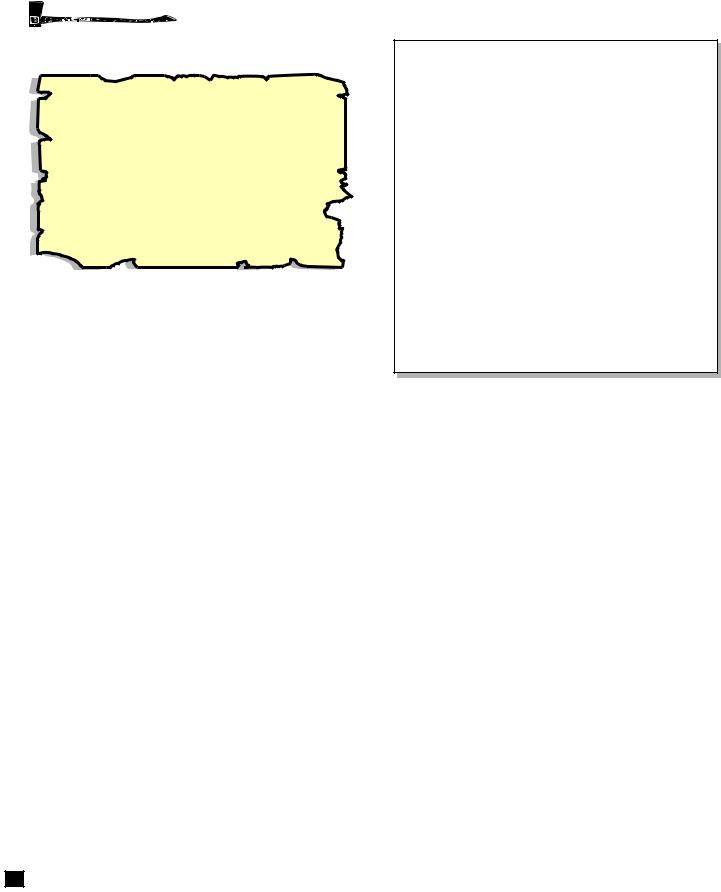
 Using Axes
Using Axes
Felling Trees
Felling is probably the most dangerous and difficult job in the
woods. The USDA Forest Service has long required specialized training and certification before any of its employees are allowed to cut standing trees. This training is required whether chain saws, crosscut saws, or axes are used to fell the trees.
This description of felling with an ax is meant only to give the reader a generalized idea of the felling procedure. It should not be construed as a training guide. A faller needs to judge many variables—some deadly if misjudged—before attempting to cut down a tree. The information presented here is just a guide to help prevent some common mistakes. It focuses on ax techniques rather than felling techniques.
Never start chopping until you are sure there are no branches or brush in the way. An ax deflected by a small branch or twig can cause a serious accident. Be sure your fellow workers are in the clear.
Decide the direction in which you want the tree to fall, ideally with the natural lean of the tree. If not, you may have to use special techniques and equipment to offset the lean, techniques a novice should not try. Your ax can serve as a plumb to determine the tree’s natural lean. To do so, hold the ax in your hand above your head at arm’s length (Figure 82). Grip the very end of the handle with the ax head down. Use the ax as a plumb to sight around the tree from different positions as you walk a circle around the tree. Be sure to take into account the crown mass, which side the branches are on, and whether there is more weight on one side or the other.
Consider wind direction. A slight breeze on the ground can be more powerful at the top of a 60to 100-foot tree. Wind can change the direction of fall with unpredictable results. Heed the warning
Figure 82—Using an ax as a plumb. A hard hat is also required here (drawing by Frederic H. Kock).
of an old country-western song by Sonny James:
Don’t Cut Timber on a Windy Day. Decide the direction you will need to move the log after it is down on the ground. Try to drop the tree in a clearing, if possible.
After you have determined where the tree is going to fall, gently swing your ax handle fully extended over your head in a 360° arc to make sure there are no obstructions (Figure 83). Walk around the tree at arm’s length with the ax fully extended to make sure that there are no branches within this circumference. Clear the underbrush for an escape path at about a 45° angle to the direction of the planned tree fall. The route should be clear of all vines, branches, and rocks—anything that you might trip over. Never stand directly behind the tree as it falls or during your escape. If the tree kicks back, or if the tree slabs and splits, the back portion will kick straight back.
“Widow makers” are another danger. These are usually dead branches in the tree you’re felling or in neighboring trees that might be knocked down by the tree you are cutting. You should always wear personal protective gear during these
38
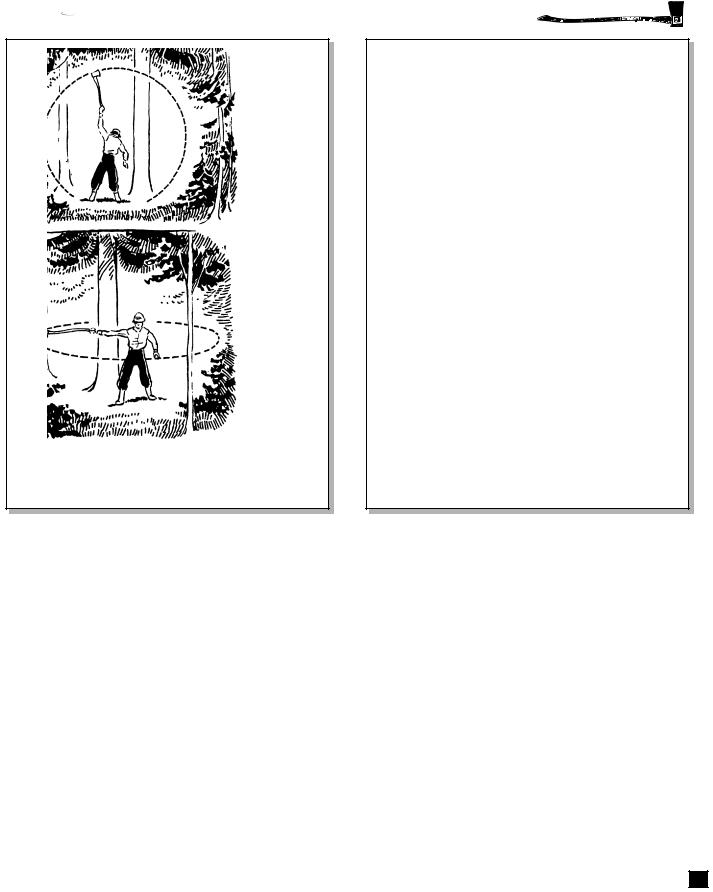
Figures 83—Clear an area completely around the tree before starting to chop (drawings by Frederic H. Kock).
Using Axes
Figure 84—Notching a tree to determine the direction of fall (drawings by Frederic H. Kock).
operations. Hard hats and safety glasses are a must.
Make sure your footing is secure and stable. Chop only when you are well clear of other people. Stand with your weight evenly distributed with both feet planted about shoulder width apart. Check the distance to stand from the cut before you start to swing. Start swinging with a very gentle easy motion in order to gauge your distance and your power stroke.
The first cut will be the front notch or the undercut in the direction of the planned fall (Figure 84). This notch should be about one-third to one-half of the diameter of the tree when felling strictly with an ax. If a crosscut saw is
used in combination with the ax, the front notch should be no more than one-third of the diameter of the tree.
Use your ax as a sight guide to determine if the notch is in the proper direction of the fall (Figure 85). A double-bit ax is best for this purpose as it makes a perfect T-square. Place the head of the double-bit ax in the front notch that you have just cut, with the handle pointing directly in the planned direction of the fall. If the handle does not point in the planned direction of the fall, you must re-chop the notch until the handle points in the right direction.
39
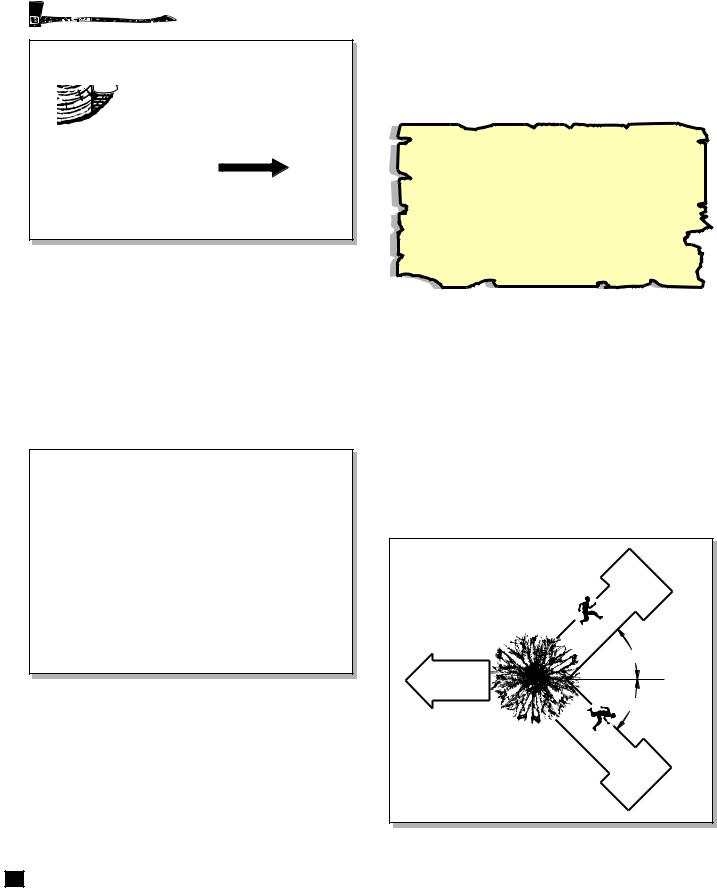
 Using Axes
Using Axes
 Front notch
Front notch
Direction of fall
Figure 85—Using a double-bit ax as a T-square to indicate the direction of fall.
Now begin the back cut, or the final felling cut, on the opposite side of your front notch. The back notch should be a minimum of 2 inches higher on the stump than the front notch. The back notch is cut to within about 2 inches of the tip of the V on your front notch (Figure 86). Never cut completely through the back notch to the front notch.
Figure 86—Back notch or the final felling cut.
Remember the rule when placing your cuts to create a notch—near, far, and middle to remove each chip. Always place the front notch and the back notch as low on the tree as possible while standing safely and comfortably. As the back notch gets deeper, closing in on the 2 remaining inches of hinge wood, keep glancing toward the top of the tree. The tree will start moving there
first, allowing you to detect whether the tree is going to fall in the planned direction. A gust of wind blowing opposite the planned direction of fall can get you into serious trouble at this point.
Cutting through the hinge wood is the single most dangerous thing a novice faller can do. Never cut through the hinge wood! If you do, you will have absolutely no control over the direction
the tree will fall, and it could very well fall on you.
When the top of the tree starts to move in the direction of fall, move a few yards back away from the tree at an angle (Figure 87); never move directly behind the tree or in front of the fall! Keep your eye on the top of the tree while making your escape. You should get as far from the tree as possible. Keep your eye on the tree long enough to make sure not only of its direction of fall, but to look for widow makers that can be thrown back in your direction. As the tree is going down, continue to look overhead. You are only safe once the tree and broken limbs are on the ground.
|
|
Safety |
|
|
Zone |
Escape |
Path |
|
|
45˚ |
|
|
|
|
Direction |
|
|
of Fall |
|
|
|
|
45˚ |
Alternate |
|
|
Path |
Safety |
|
|
|
|
|
|
Zone |
Figure 87—Plan and clear escape routes at an angle away from the planned direction of fall.
40
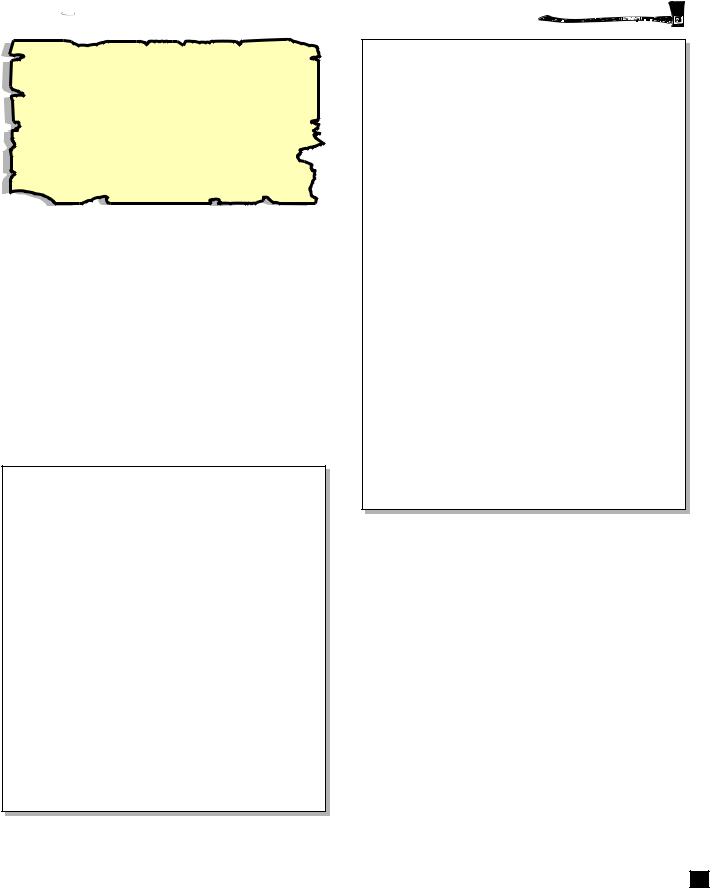
When you use an ax for both the front and back notches instead of
using a crosscut saw for the back notch, you cannot use a wedge to secure the direction of fall. This is one disadvantage of using an ax instead of a saw for the back notch.
Limbing
After the tree is on the ground, the next step is removing its branches, called limbing. Start at the butt of the log and work toward the top, cutting on the underside of the branches (Figure 88). Always limb from the opposite side of the log with the log separating you from the ax. Limbing is a dangerous operation because of the chance of glancing blows (Figure 89) when the ax does not dig into the wood.
Using Axes 
BRANCH ON THE
FAR SIDE
NEVER ON THE NEAR
SIDE
NEVER STRADDLE
THE LOG
Figure 88—Cut the underside of the branch when lopping branches (drawings by Frederic H. Kock).
Figures 89—Guidelines for limbing (drawing by Frederic H. Kock).
You need to pay attention to branches that are under compression, those that bear the weight of the log. When the limb is cut, the limb may spring free, striking you. The log can also roll.
Limbing is like other chopping in most ways. The same grips on the ax handle are used and the swing is the same. Much of the ax work, however, is performed in constricted, awkward positions. Some branches are large, others small. You need good judgment to place the right amount of force behind each swing of the ax.
The danger of accidents from an ax that has been deflected by branches is much greater than with clear chopping. One important precaution is to clear interfering branches
41
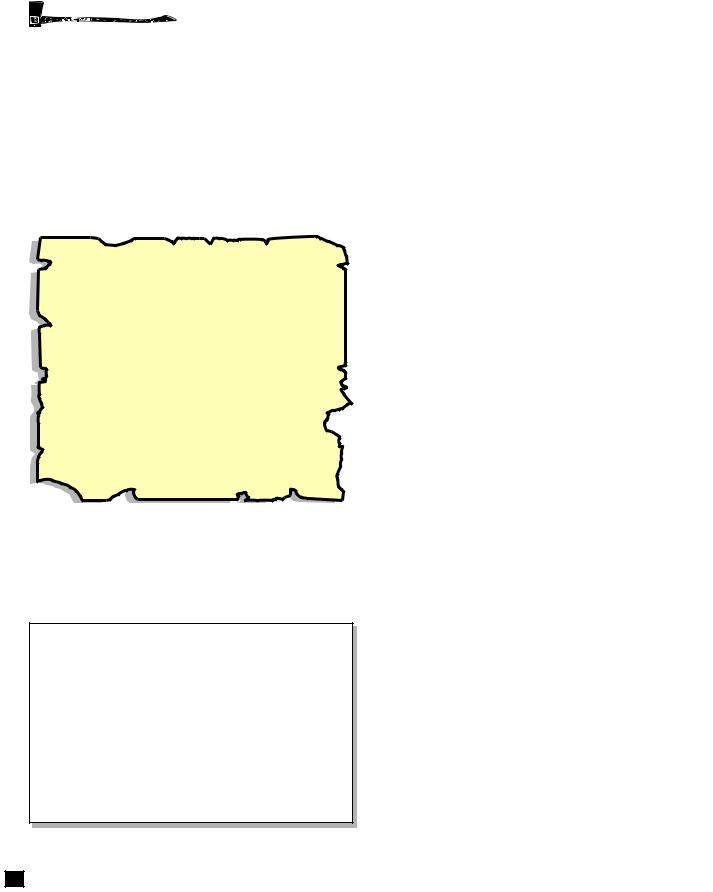
 Using Axes
Using Axes
before attempting to chop a large limb. If the log is so large that you cannot reach over it to limb, chop the top branches off first. Stand on top of the tree trunk to chop the side branches. Cut each limb flush with the trunk; leave no stobs or pig ears.
The inexperienced chopper should do very little limbing while standing on the log. Experienced choppers with sure control of the ax will be able to work safely in the more hazardous positions.
Agood suggestion from Ian Barlow, trails and wilderness expert on the
Nez Perce National Forest:
No matter how hard you try to avoid it, sometimes you have to limb on the same side of the log that you are standing on. When that happens, a good rule of thumb is to never let your ax handle or your ax head drop below the level of your hands while you’re chopping. If you never let your ax head break a plane that’s parallel with the ground, you can’t cut your feet.
For large limbs, particularly on hardwoods, it is often necessary to cut a notch similar to that used in cutting down a tree (Figure 90). Cut from the lower side of the limb, as always, and keep the bottom of the notch even with the trunk
surface. The vertical side of the notch should slope somewhat with the angle of the limb. Often a larger notch is easier to cut than a smaller one. The downward cut is made with the grain of the wood and not directly across it.
A word should be said about hemlock knots. These knots are very hard, especially on dead limbs. It is sometimes better to break off small limbs with the poll of the ax than to try to chop them. It is easy to take a huge nick out of the ax bit by swinging too hard at right angles to a hemlock limb. This is more likely to happen in cold weather, when the ax is more brittle. In such cases, warm the ax bit before using it on such limbs. If possible, use an ax with a blunter taper than you would for ordinary chopping. As a final precaution, chop lightly at an angle to, or with, the grain, and do not attempt to twist out the chips.
Cutting Pinned-Down
Saplings
A dangerous job that goes along with limbing is cutting off bowed-over saplings, whose tops have been pinned down by the fallen tree. Never cut them by giving either the top or the butt a whack with the ax from the outside. They can spring out like a catapult, with a force that can easily break a jaw or arm. The trick is to cut the bowed-over tree from the inside. If this is impossible, give the strained fibers on the outside a light touch with the ax to partially release the strain before fully severing the sapling.
Figure 90—Cutting off a large limb.
Bucking
Bucking means cutting a tree into log lengths or firewood bolts once it is on the ground. Often it is also necessary to buck logs that have fallen across trails. Most bucking is done with the saw, but there is nothing wrong with using an ax for this job. A good chopper can often buck a log in the same time it takes to set up a crosscut saw
42
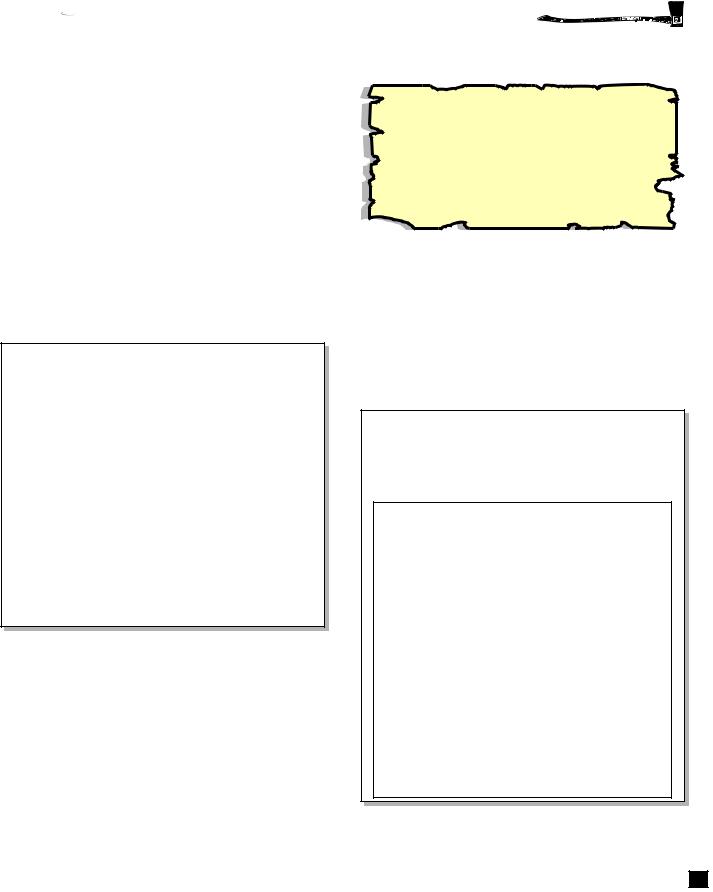
and use it to cut a log.
The beginning chopper should stand on the ground to the side of the log. Make sure you have firm footing. Take a wide stance and chop between your feet, turning your body in the direction of the ax stroke as you cut first one side of the notch, then the other. Again, keeping the handle parallel with the ground will prevent foot injuries.
For an experienced ax user, the proper position for bucking is to stand directly on top of the log and chop halfway through one side. Turn around and chop halfway through the other side to finish the cut. These two V-notches will meet right in the middle of the log (Figure 91).
On logs that are small enough to be rolled over,
Using Axes 
edge on a rock as you finish the cut.
How wide should you cut your V-notch? The
The advantages of chopping two V- notches in a log instead of one large
V-notch is simply a matter of ease of chopping. Chopping two smaller V- notches is easier and takes less time than cutting one large notch.
most common mistake is to make the V-notch too small (Figure 92). This pinches the middle of the V-notch before you reach the center of the log. You will quickly find that chips will not clear from a notch that is too wide. If a very large log is bucked, you need to make your notch narrow and then widen it out; the chips won’t clear if you start the notch much wider than 10 to 12 inches.
Figure 91—Top view of the sequence of cuts made by an experienced right-handed chopper standing on top of the log. The final power stroke is offset slightly.
you can achieve the same economy without standing on the log. Stand on the ground and chop a V-notch on the top, then roll the log over and chop a V-notch on the bottom.
Often it is necessary to chop a large log while standing on the ground. You must make a very large V-notch to chop all the way through from just one side. You also risk hitting your cutting
VIEW
Figure 92—Size the notch to close halfway through the log if you can chop both sides of the log. If you can only cut on one side, the notch will have to be much larger (drawings by Frederic H. Kock).
43
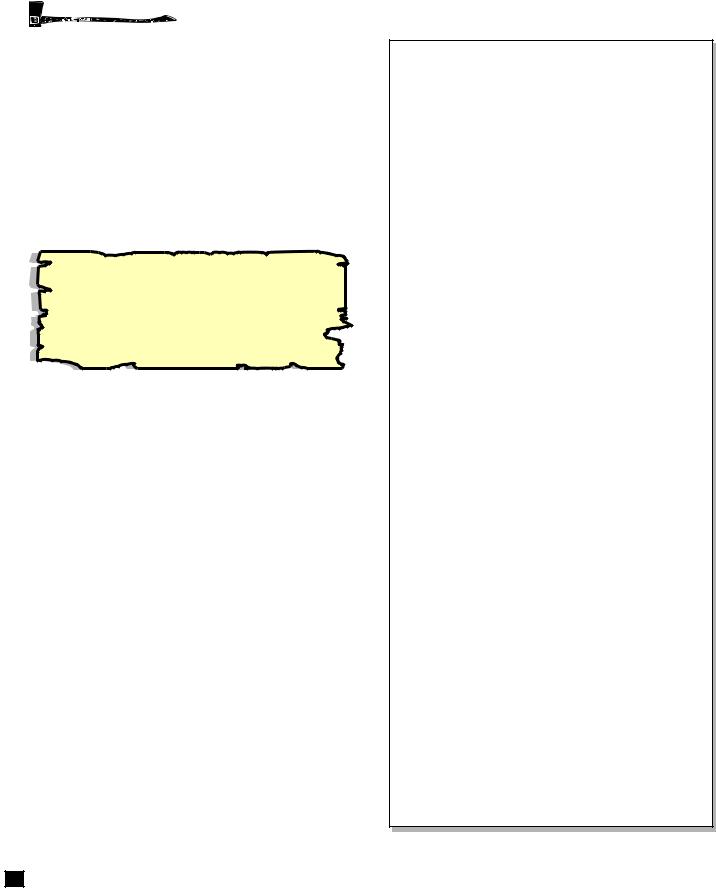
 Using Axes
Using Axes
On a large log you increase the size of the notch by chopping out one side. Always remember your high, low, and middle technique for placing ax blows. Make three forehand swings, high, low, and middle, followed by three backhand swings. If you are standing on the log, your first swing should strike high at the top of the log; the second at the bottom of log; and the third right in the middle. If you follow any other sequence, the ax will stick in the wood. The last stroke, stroke number six, throws the chip on the ground (Figure 80).
Give a slight twist to the ax on this last chip-removal stroke. This twist
will help bust the chips out and keep the ax from sticking in the log.
Splitting
The wood to be split is cut into stove lengths that can be anywhere from 12 to 24 inches long. Stand the wood on end, either on the ground or on a chopping block, if the wood has been cut straight with a chain saw or crosscut saw. If the ends are uneven, the wood needs to be placed in a crotch of a downed tree to hold it upright (Figure 93).
You should have a designated splitting ax. Its blade should have a much steeper angle than a felling and bucking ax. Take advantage of existing cracks or checks in the wood to help direct your first blow, because the first split is generally the most difficult. Swing straight down toward the top of the block. Use your body weight, with your knees snapping into position just as you hit the block of wood. Give the ax handle a slight twist just as the bit hits the block (Figure 94). This throws the block of wood apart and prevents the ax from sticking. The real secret of splitting wood with an ax is in this little twist right at the end of the stroke.
Figure 93—Safe and unsafe techniques for splitting wood (drawings by Frederic H. Kock).
44
